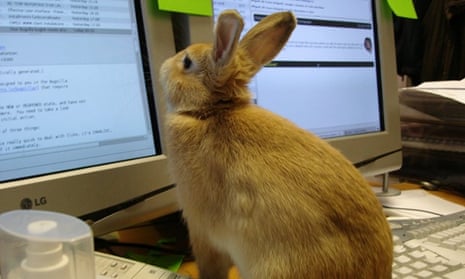The school that I attended when I was nine years old didn’t have much of a playground – just a pull-up bar and two basketball hoops on either side of the blacktop. But nobody I knew cared, because we spent all our playtime in the ragweed-choked thickets on the outskirts of the yard, pretending to be the rabbits from Watership Down.
The following year, the school blocked one of our most significant warrens and razed two others to install some sort of jungle gym nonsense. This made the playground function more like the people in charge thought a playground should function – there were things to climb on, things to swing on, things to race each other to the top of. But we wanted things to pretend to be rabbits on. The grown-ups in charge tore down the parts we were using in favor of what they thought we should use.
Twitter’s recent change to the way its “favorites” work shows the same kind of grown-up tone-deafness. The service now allows tweets that you marked as a favorite to show up in your followers’ timelines (and vice versa). Many users might not notice, but Twitter’s core audience has been abristle at this change.
Whereas faves were, until now, semi-invisible except to those being favored, Twitter’s new plan shows them to the world (or, at least your other followers). A glance at any taxonomy of Twitter faves – and there have been ones at Buzzfeed, Time and the Wire – makes it clear that this runs counter to the way faves are used in the wild. Buzzfeed’s list of 17 types of fave, for instance, includes “the hate fave”, “the secret crush fave”, “the flirty mutual fave” and “the blackmail fave”. Much of the rich vocabulary of the fave depends on the reality that they aren’t visible to anyone who’s not involved or specifically looking.
Faving can mean “I like this” or “I hate this” or “I like this but not enough to retweet it” or “I want to passive-aggressively respond to this” or a host of other things. It’s a complicated, Calvinball-esque game. But one thing the Twitter favorite has never meant is: “I wish the fact that I liked/hated/liked but not enough to retweet/wanted to passive-aggressively respond to this would show up in the feed of everyone I know.” Actually, a lot of people are mildly horrified by this notion. It’s not the way we’ve been playing; it messes with the rules we’ve made up. But it’s the way Twitter wants us to play.
Twitter wasn’t always a bunch of school administrators paving over kids’ rabbit warrens to install new equipment. Indeed, the way the service once dealt with hashtags implies that the company is capable of letting its users’ needs set the agenda. Hashtags, one of Twitter’s most powerful features, were invented by a user – they weren’t a native capability of early Twitter. Once the practice became widespread, Twitter started hyperlinking hashtags to make them easier to follow, and instituted the “trending topics” feature to track them – and now they’re a defining part of the platform.
I’ve been to Twitter headquarters in San Francisco: in addition to the start-up-requisite ping-pong tables, there are plastic deer and a huge patio with a setup for a beanbag-tossing game. Twitter, of all places, should understand that it’s built a playground and that, if you give social networkers a place to play, they will shape it to meet their ends. Improvements that simplify or enhance those innovations show that you appreciate and prioritize your users, but those “improvements” that bulldoze what they’ve built end up showing that you prioritize – well, something else. Advertisers, probably. Your vision of how your service should be used. But not the people who use it.
Twitter users don’t need the fave to be public; we need it to be multivalent. If you’re paying attention to users – or even to Buzzfeed or Time – it’s apparent that Twitter faves mean so many different things to different people. Instead of asking users to understand other people’s vocabulary, why not institute multiple types of fave, one for bookmarking and one that’s more equivalent to the Facebook “Like”? People have been calling for such a change for years.
I suspect the Twitter of five years ago – the one that made hashtags more functional because that’s what its users had carved out of blacktop and ragweed – would be doing that. But this Twitter wants to build a new, fancy playground on top of the hardscrabble one we’re actually using – one that suits its needs and not ours.







